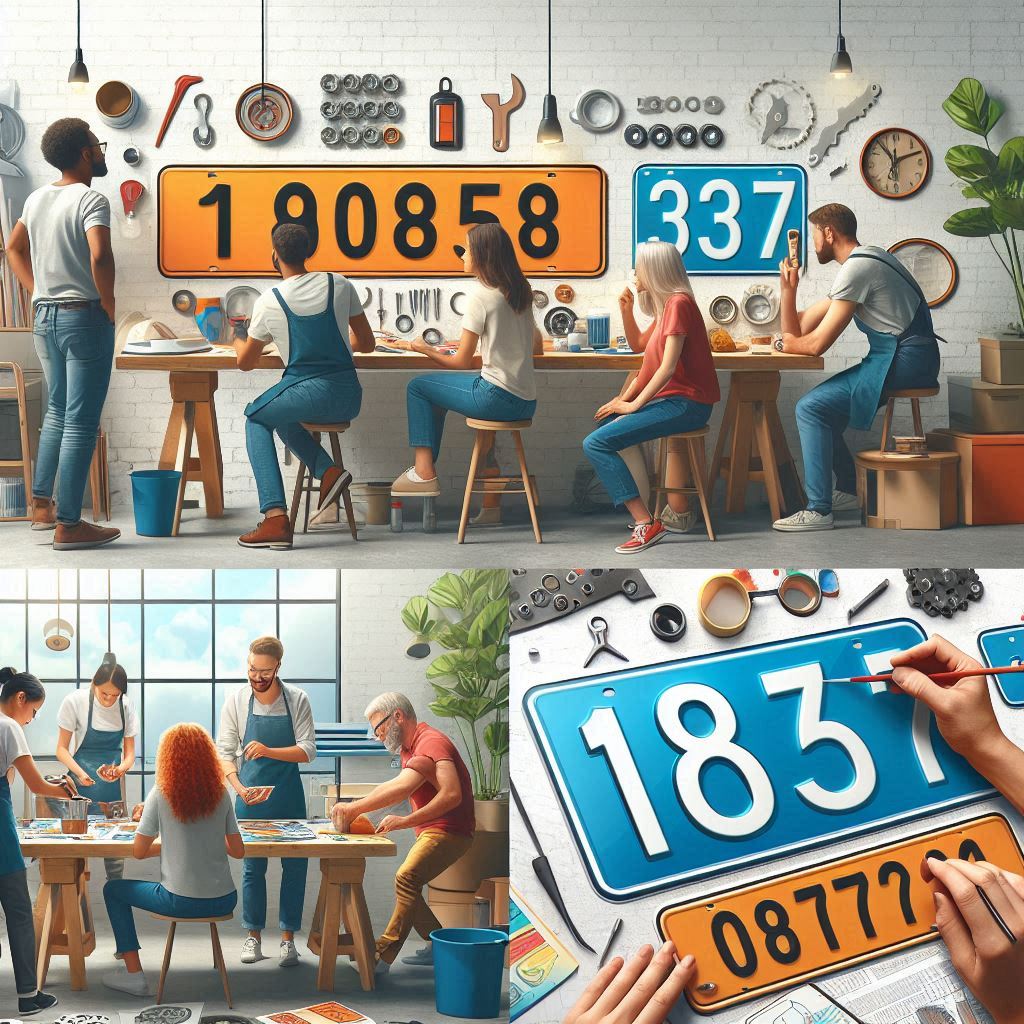Your cart is currently empty!
If you’re just starting out in the number plate business, you’re in the right place. Today, we’re going to walk you through our setup—a system we’ve spent years perfecting—to help you choose the right equipment for producing high-quality number plates. Whether you’re a seasoned pro or just getting started, this guide will give you the insights you need to make informed decisions.
Thermal Printers: The Gold Standard for Number Plates
Let’s kick things off with thermal printers. These are the workhorses of our operation, and for good reason. Thermal printers are specifically designed to handle the reflective materials we use for number plates, and the results are nothing short of impressive.
Why Thermal Printers Shine
Quality Matters: Thermal printers produce crisp, sharp text and images that stand out on reflective number plate material. This is crucial for readability and compliance with legal standards.
Consistency is Key: Once you’ve got your settings dialled in, thermal printers deliver consistent results. Plus, if you make a mistake, you can reprint on the same material without any issues.
Durability: The prints are incredibly durable, standing up to the elements and lasting for years.
A Real-Life Win with Thermal
I remember a particularly tricky order we had for a custom motorcycle plate. The customer wanted a unique design, and the reflective material was especially sensitive. Our thermal printer came to the rescue, producing a flawless print on the first try. It was one of those moments where you appreciate the investment in good equipment.
Laser Printers: Speed and Versatility
Laser printers have their own strengths, especially when it comes to speed. They’re great for high-volume orders and can handle a variety of materials beyond number plates.
The Pros of Laser Printers
Speed: Laser printers are significantly faster than thermal printers, making them ideal for large batches.
Versatility: They can print on standard paper, which is handy for invoices, labels, and other office tasks.
The Cons of Laser Printers
Quality on Reflective Material: Laser printers struggle with reflective surfaces. The print quality just isn’t as sharp, and you may end up with a blurry or faded finish.
Reprint Limitations: If you make a mistake, you can’t just reprint on the same material. You’ll need to start fresh, which can be wasteful and time-consuming.
Choosing the Right Printer for Your Needs
So, which printer should you choose?
The answer depends on your business needs.
Thermal Printer: Best for Most Jobs
Use Case: 95% of standard number plate jobs.
Why: The quality is superior, and it’s worth the investment for consistent results.
Laser Printer: Your Backup Option
Use Case: 3% of speciality jobs, like custom or irregular sizes.
Why?: While not ideal for reflective material, it’s a good backup for when you need speed over quality.
Actionable Steps to Get Started
Invest in a Thermal Printer: It’s worth the upfront cost for the quality and consistency.
Keep a Laser Printer on Hand: For those rare jobs where speed is critical.
Experiment and Adjust: Take the time to fine-tune your settings. It might take a few tries to get it right, but the results will be worth it.
Charge Appropriately: Factor in the cost of materials and potential waste when pricing jobs that require a laser printer.
Final Thoughts
Choosing the right printer for your number plate business is a crucial decision. While thermal printers are the clear winner for most jobs, having a laser printer as a backup can save the day in a pinch. Remember, quality matters, but so does versatility. With the right tools and a little practice, you’ll be producing professional-grade number plates in no time.
If you have any questions or tips to share, drop us a line. We’re always here to help you succeed in the number plate business. Happy printing!
Here’s an SEO-friendly “You might be interested in” paragraph with relevant external links to Wikipedia, tailored for a UK audience and focusing on the keywords “number,” “plates,” “how,” and “make”: You might be interested in learning more about the actual process of producing the plates. Speaking of **number plates**, you might be interested in learning more about the specific vehicle registration plate formats used around the world. If you’re thinking about **how to make** your number plates stand out, it is important to consider that the plates must adhere to the standards, so you might want to have a read of British number plate regulations. And just in case, if you are not sure how to make it legal, read about Road traffic law in the United Kingdom.

